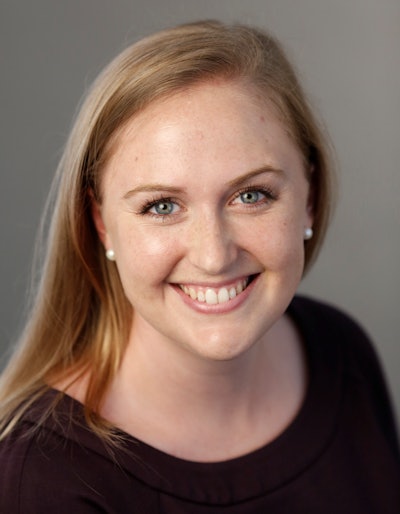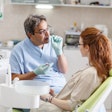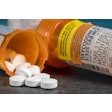
The amount of opioids prescribed by all healthcare practitioners in the U.S. has increased over the last 15 years, but the total quantity of opioids prescribed by dentists has declined, according to new study published on January 15 in Annals of Emergency Medicine.
 Sarah Axeen, PhD.
Sarah Axeen, PhD.The resarchers calculated the quantity of opioids prescribed over a 15-year period by converting prescriptions to total milligrams of morphine equivalent (MME). As of 2012, dental professionals prescribed only about 2% of the total quantity of opioids, while office-based physicians prescribed 80%. Their findings suggest that opioid prescriptions from dentists appear to pose far less of threat to the opioid crisis than prescriptions from office-based physicians.
"The main takeaway for dental professionals is that the vast majority of prescriptions are coming from patient visits to office-based physicians," lead study author Sarah Axeen, PhD, told DrBicuspid.com. Axeen is an assistant professor at the University of Southern California Keck School of Medicine in Los Angeles.
Dental opioid prescriptions relatively minor
With the opioid epidemic continuing to worsen, researchers and public health officials are eager to find ways to prevent opioid abuse and misuse, including through provider education and guidelines. Yet few scientific studies have looked at the long-term opioid prescribing habits of different types of healthcare providers.
“The vast majority of prescriptions are coming from patient visits to office-based physicians.”
The researchers, therefore, conducted a study using 15 years' worth of Medical Expenditure Panel Survey data. They hoped their findings might be able to provide a foundation for future prescription guidelines and awareness campaigns.
The study included 47,081 cancer-free adults who received at least one opioid prescription from 1996 to 2012. The researchers converted each opioid prescription to MME so that they could compare potency across different brands and types of medication.
The total amount of prescribed MME increased 471% from 1996 to 2012. This increase was seen across multiple healthcare settings, including dental offices, emergency departments, and inpatient hospitals.
However, the share of opioids prescribed by dental professionals decreased over the 15-year time period. Dentists prescribed 7% of total MME in 1996 but only about 2% of the total in 2012. In contrast, office-based physician opioid prescriptions rose from 71% of total MME in 1996 to 83% in 2012.
"We found that the explosive increase in prescription opioids in the United States has been largely driven from refilled or chronic prescriptions from office-based practice and not from [emergency departments] or inpatient care," the study authors wrote (Ann Emer Med, January 15, 2018).
Axeen cautioned, however, that dental professionals should still be judicious with prescriptions, even if dentists prescribe only a small percentage of the morphine equivalent of opioids.
"While dental professionals may not be primarily responsible for the availability of opioids, they should still be alert to whether their patients are exhibiting possible signs of addiction, and whether their prescriptions might be the first 'taste' a patient gets for opioids," she noted.
Rethinking policies
The study had a number of shortcomings, including that certain population groups are typically underrepresented from the Medical Expenditure Panel Survey and that a significant portion of opioid prescriptions couldn't be attributed to a specific place of care. Furthermore, dental data are not included in the study text, and the team was not able to identify how much of emergency-based opioid prescriptions were for dental emergencies, according to Axeen.
Nevertheless, the study highlights the importance addressing the source of opioid prescriptions when creating opioid prescription guidelines and regulations. It also questions whether continuing to target emergency departments and inpatient hospitals is the best use of resources.
"Policies aimed at reducing the quantity of opioids prescribed should generally focus on office-based prescriptions and specifically target reducing the amount of repeated or chronic prescriptions and focus less on hospital-based efforts," the authors concluded.



















